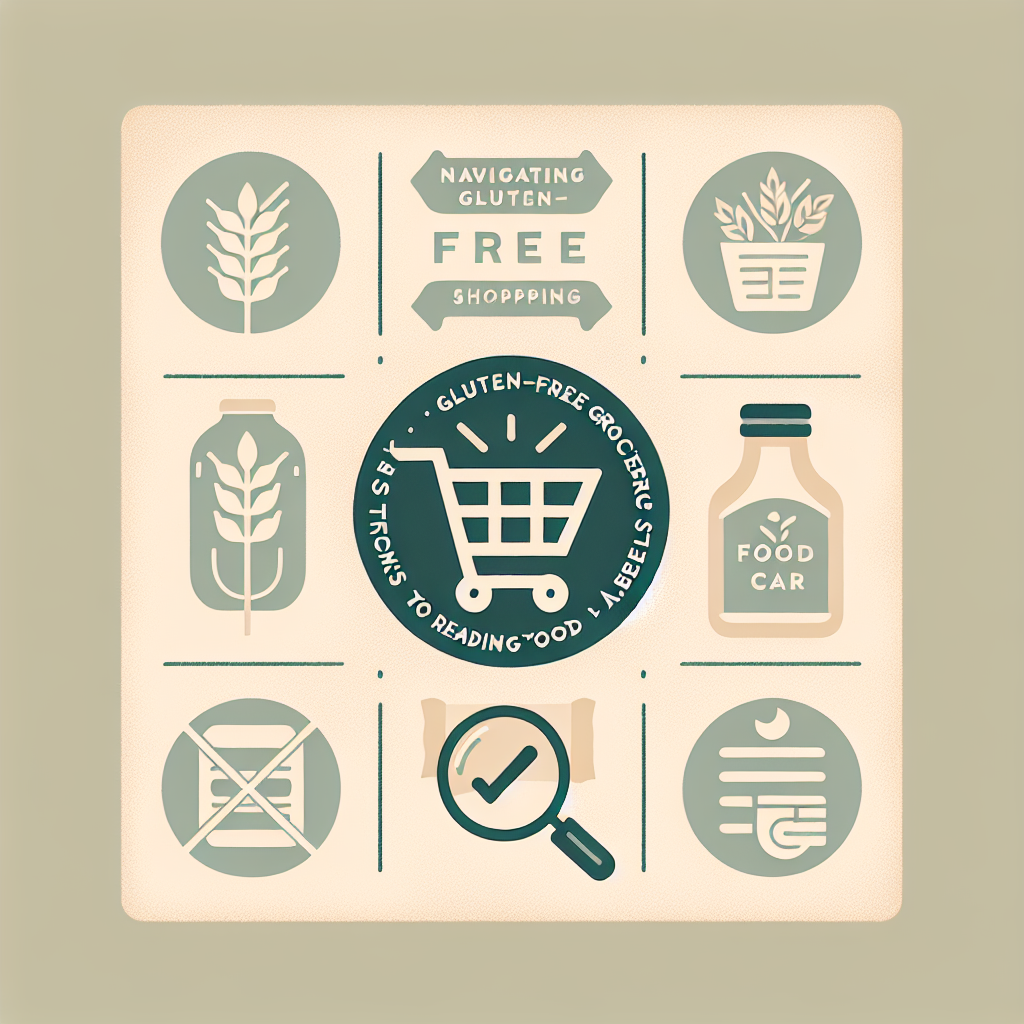Let me tell you a story about a young lad named Oliver. Despite his love for bright picnic afternoons with lovingly crafted sandwiches and cheerful family dinners around a gleaming roast chicken, Oliver lived much of his life struggling with digestive issues. He frequently left these heartwarming affairs with a bloated tummy and an aching regret — not from indulging in too many desserts, but from an unwelcome guest at his gastric party: gluten. From the day he dedicated himself to a gluten-free life, it was as if a shadow had lifted. His tummy no longer protested, and he was able to fully enjoy these gatherings without fear. But Oliver’s transition wasn’t a smooth one. The most challenging aspect? Making sense of food labels while shopping for gluten-free groceries!
In today’s post, we’ll go grocery shopping with Oliver—one item at a time, one aisle at a time. We’ll share some tips and tricks on how to read food labels, making sure no gluten-containing detail sneaks past you, thereby making your shopping trip a breeze. This is not just a shopping journey, it’s a practice of mindfulness, patience, and awareness that mocks any regular scavenger hunt in its excitement.
Grocery shopping was once a chore for Oliver. Gluten seemed to be hiding everywhere, from the most obvious culprits like bread and pasta to seemingly innocent items like sauces and soups. He felt overwhelmed, confused, and let’s be honest – a little bit scared. The first rule he learned on this adventure was to steer clear of anything with wheat, barley, rye, malt and brewer’s yeast. But how could he keep track? This is where the first trick of the trade comes into play: Keep a handy list. Preparing this list might take you some effort initially, but trust me, you’ll be thanking yourself every time you grocery shop in peace.
Now, the gluten story doesn’t end with just avoiding these grains. Remember those sneaky sauces and soups I mentioned? Often, many processed foods use gluten as a binder or thickener. And here is the second trick: You have to be a detective with a keen eye for detail. Sure, a sauce might not contain the usual suspects, but you need to look out for terms like “modified food starch,” “dextrin,” or “malodextrin,” which could indicate the presence of gluten.
Being an informed shopper, Oliver began to recognize certain labels that were his go-to signals for safety. Have you ever noticed phrases like “Certified Gluten-Free” or “No Gluten Ingredients” on food packaging? These labels can be immensely helpful. To earn a “Certified Gluten-Free” badge, products undergo testing to ensure they meet the standards set by gluten-free certification organizations. If a product has “No Gluten Ingredients” labeled, it simply means the product doesn’t contain any ingredients derived from wheat, barley, or rye. However, beware of cross-contamination! We’ve talked about how to deal with cross-contamination at home [in a previous post](#), but it’s also important to be mindful of potential cross-contamination in the manufacturing process as well.
Packaged foods list their ingredients in descending order by weight, which means the first few ingredients listed make up the majority of the product’s content. Therefore, even if a product does not have a gluten grain listed as a key ingredient, it could still be present in smaller quantities further down the list.
A common source of confusion for Oliver, and maybe for you too, is the foods labeled as “wheat-free.” Does “wheat-free” automatically mean it’s gluten-free? Well, not necessarily. Remember, gluten is found not only in wheat but also in other grains like rye and barley. Hence, a product might be wheat-free but still contain gluten from other sources. In this tricky situation, the product’s ingredient list is your best friend.
Beyond just living a healthier, happier life, going gluten-free also opened a new world for Oliver—one that involved discovering new textures, flavors, and whole foods. After all, fruits, vegetables, meats, fish, and dairy are naturally gluten-free. He began experimenting with gluten-free grains like quinoa, buckwheat, and amaranth, creating hearty meals and tasty treats he wouldn’t have thought of in his pre-gluten-free days. For those of you new to the arena, we have some beginner-friendly recipes [here](#) that you can try.
Throughout this journey, Oliver realized that undergoing a lifestyle change like going gluten-free isn’t just about discarding old habits—it’s about adapting, evolving, and mostly, learning. He learned to cope, to adjust, and to recognize the silver linings in what at first seemed like a looming storm cloud.
Our takeaway? Reading food labels may seem like a daunting task initially, but with practice and patience, it can become as natural as breathing. Remember, the objective isn’t to create fear or restrictions but to foster understanding. By knowing what goes into your food, you empower yourself to make conscious choices for your body, your health, and ultimately, your happiness. Because, at the end of the day, it’s all about living easy and gluten-free.
**Category: Educational Guides**


